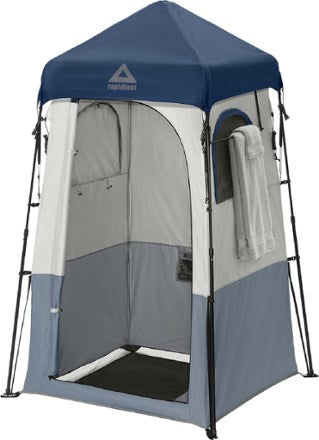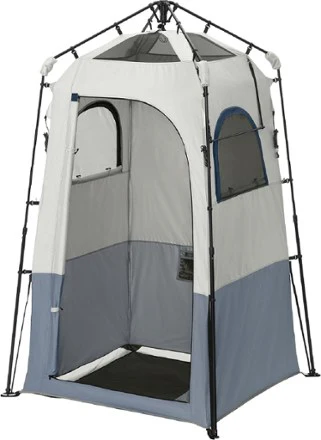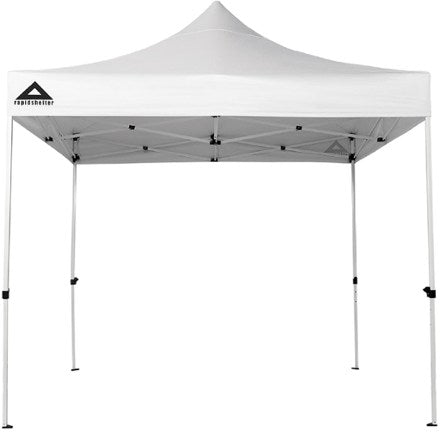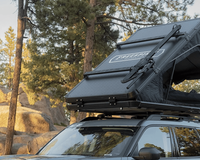Camping is all about embracing the great outdoors, but one challenge many campers face is maintaining privacy and hygiene when nature calls. While modern campgrounds may provide restrooms, remote camping sites often lack such facilities. This is where a camping toilet tent comes in. These portable structures are designed to offer a convenient, private space to use a portable toilet or take care of personal hygiene needs while camping. In this guide, we'll explore the importance of a camping toilet tent, the key features to look for, and how to choose the best option for your next adventure.

Why a Camping Toilet Tent is Essential
When you’re in the wild, it’s crucial to maintain privacy, especially when nature requires a bit more personal attention. A camping toilet tent offers a solution by providing an enclosed space to use a portable toilet, change clothes, or handle other hygiene needs. Without such a structure, you would likely have to resort to uncomfortable or unsanitary alternatives, such as going in the open or relying on public restrooms, which can be far from ideal in remote areas.
These tents not only provide privacy but also improve hygiene by preventing waste from being left in the open, thus keeping the campsite clean. They are a simple and effective addition to your camping gear, allowing you to enjoy your outdoor experience without the inconvenience of inadequate facilities.
Key Features of a Good Camping Toilet Tent
When selecting a camping toilet tent, there are several important factors to consider. Understanding these features will help you find the best tent to meet your needs, ensuring comfort and ease during your trip.
Size and Space
Camping toilet tents come in various sizes, from compact single-person tents to larger models that can accommodate multiple people or larger portable toilets. If you’re camping solo or with one other person, a smaller, more lightweight tent may be sufficient. However, if you’re in a group or plan to store additional items like toiletries or a larger portable toilet, it’s worth opting for a more spacious model.
Privacy and Material
The main purpose of a toilet tent is to offer privacy, so the material used is important. Look for tents made with durable, opaque fabrics such as polyester or nylon. These materials not only block the view from the outside but also provide some protection from the elements. Many camping toilet tents are designed with dark or muted colors to ensure maximum privacy. Some tents also feature small mesh windows for ventilation, allowing airflow while still maintaining privacy.
Ventilation
A well-ventilated tent is essential, especially when it comes to a camping toilet tent. Without proper ventilation, unpleasant odors can quickly build up inside the tent, making the experience uncomfortable. Many camping toilet tents come with mesh panels or vents that allow for airflow while still providing coverage. Look for tents that offer adjustable ventilation to suit different weather conditions, ensuring that the interior remains fresh.
Durability and Weather Resistance
Camping can expose your gear to a variety of weather conditions. Therefore, it’s important to choose a toilet tent that can withstand rain, wind, and sun exposure. Ensure the tent is made from waterproof and UV-resistant materials, which will help protect you from rain and harmful sun rays. Some tents also come with reinforced stitching or stronger frames, providing added durability for more challenging environments.
Easy Setup and Portability
One of the advantages of a camping toilet tent is how easy it is to set up and take down. Most models are designed for quick and simple assembly, with pop-up or collapsible frames that require no tools. This makes them ideal for campers who need a fast solution. Additionally, portability is important, especially if you plan to hike or travel long distances. Choose a lightweight model that can be easily packed down into a compact carrying case.

Best Practices for Using a Camping Toilet Tent
To make the most of your camping toilet tent, there are a few best practices that will help maintain hygiene and improve the overall experience.
Choosing the Right Location
When setting up your camping toilet tent, always choose an appropriate location. Ideally, the tent should be placed at least 200 feet away from water sources, trails, or your main campsite. This helps maintain sanitation and ensures that you’re not polluting your water supply. Look for flat, dry ground that’s free of sharp rocks or roots.
Using a Portable Toilet
A camping toilet tent doesn’t function without a portable toilet inside. The most common options are bag toilets, chemical toilets, or composting toilets. Choose the one that best fits your needs. For instance, bag toilets are lightweight and easy to dispose of, while chemical toilets are more permanent but require proper disposal facilities.
Maintaining Hygiene
To keep your camping toilet tent clean and hygienic, bring along biodegradable toilet paper and hand sanitizers. Disinfectant wipes can also be used to wipe down surfaces after each use. Be mindful of proper waste disposal. Some campsites may have specific rules about waste, so always pack out your waste if there are no toilet facilities available.
Disposing of Waste
Many portable toilets are designed to be packed out, meaning you’ll need to take the waste with you when you leave. If your camping toilet tent is used in a remote location, make sure you have a plan for waste disposal. Some areas may have designated waste bins or facilities where you can empty portable toilets, while in other places, you’ll need to pack everything out and dispose of it properly.

Alternatives to Camping Toilet Tents
While camping toilet tents are an excellent solution for many, there are a few alternatives worth considering, depending on the nature of your camping trip.
Using Natural Surroundings
For those who prefer a more minimalist approach, it’s possible to find a secluded spot away from the campsite to relieve yourself. However, this comes with its own set of challenges, including the lack of privacy and the risk of polluting the environment. If you do decide to go this route, always follow Leave No Trace principles by digging a small cat hole to bury your waste at least six inches deep.
Public Restrooms and Campgrounds
Some campsites and national parks offer public restrooms, which may be equipped with basic facilities like toilets and sinks. However, these facilities may not always be available or clean, especially in more remote areas. A camping toilet tent can offer a more comfortable and private alternative, ensuring you don’t have to rely on potentially unsanitary public restrooms.
Privacy Shelters
If you don’t need a dedicated toilet tent but still want privacy for changing clothes or personal care, a basic privacy shelter might be a good option. These shelters are larger and more versatile, serving multiple functions like changing areas or shower stalls.
Conclusion
A camping toilet tent is an essential item for maintaining privacy and hygiene during your outdoor adventures, particularly when venturing into remote areas. By offering shelter for portable toilets and providing a private space for personal care, these tents improve your camping experience significantly. With the right setup, a quality camping toilet tent can make your outdoor trips more comfortable, hygienic, and enjoyable, ensuring that you can focus on what matters most—enjoying nature.










